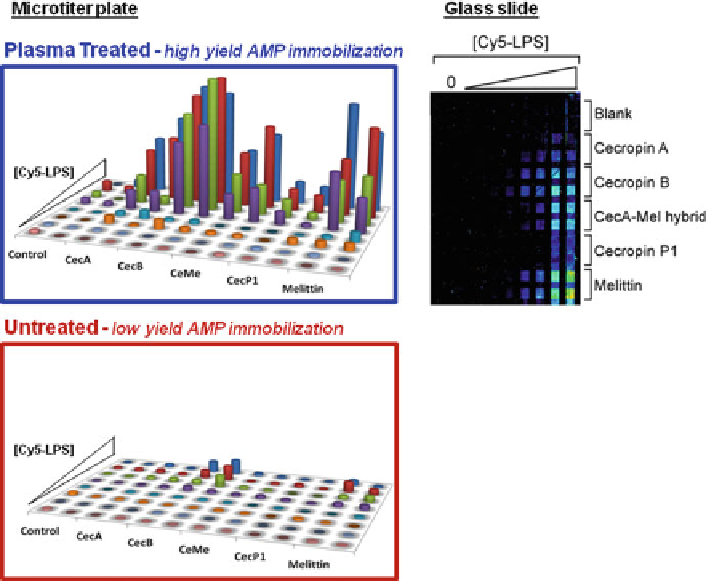Biomedical Engineering Reference
In-Depth Information
Fig. 4 Cy5-LPS fluorescence from plasma-treated (
top left panel
) and -untreated (
bottom left
panel
) microtiter plates indicating the binding of Cy5-conjugated bacterial biomarker, LPS, to a
variety of AMPs. Cy-5 LPS binding to AMPs immobilized onto glass slide (
right
)
functionalized with silane and cross-linkers that could provide tailored covalent
immobilization for different AMPs. We observed that plasma treatment promoted
AMP immobilization efficiency that was comparable to commercial microtiter
plates [
52
] and increased the target capture yield by up to 40 times compared to
untreated plates (Fig.
4
, microtiter plate). In addition, when plasma-treated plates
were processed using analogous chemistry as used on glass slides, the binding
pattern observed were similar to that of the gold standard glass slides (Fig.
4
,
compared microtiter plate to glass slides). This novel method for microtiter plate
processing allows for optimal immobilization chemistry for each AMP to ensure
AMP functionality, maximize signature extraction, and improve sensing capability.
3.3.2 Bead-Based Formats
A second HTS technology to which AMPs have been applied is bead-based arrays.
Exemplified by Luminex100 and MAGPIX systems, bead-based arrays capitalize
on the vast multiplexing capabilities of individually interrogable microspheres to

Search WWH ::

Custom Search